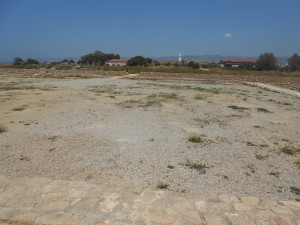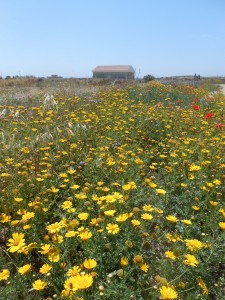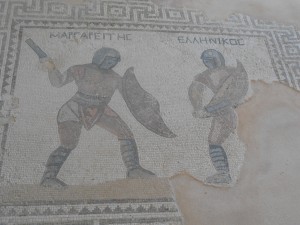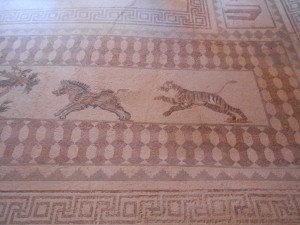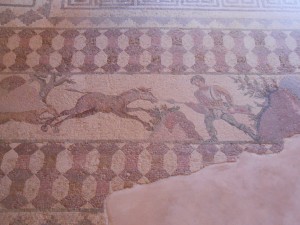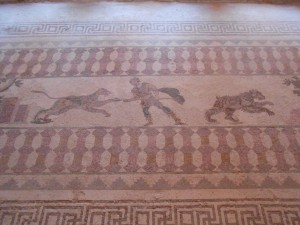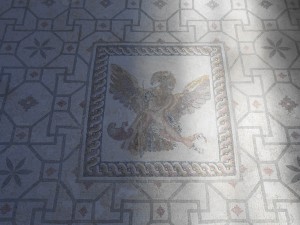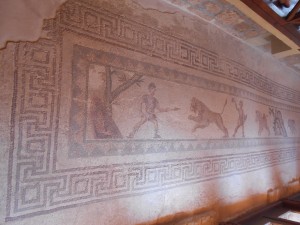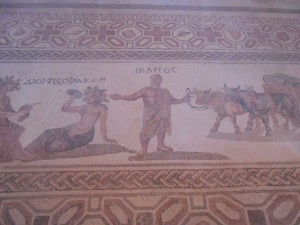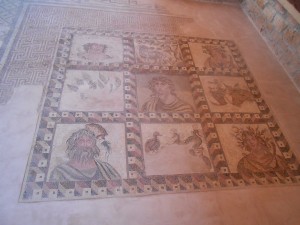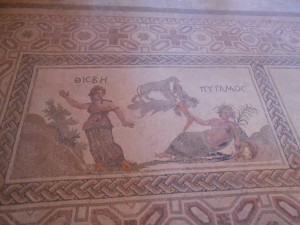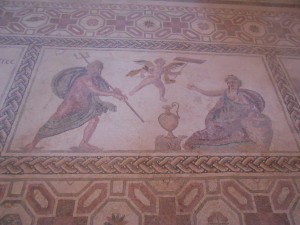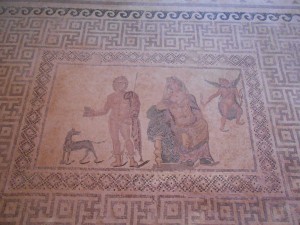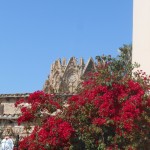The ultimate destination of Paul was Paphos. He wanted to speak to the provincial governor of the island— Sergius Paulus. There he would testify to the Gospel, but at the request of the governor himself. The Palace at Paphos was spectacular in both it’s setting by the sea, and by the incredible houses with mosaics that surrounded it as well, though today, the Palace area mostly looks like this…
Though close by it looks like this…
This posts will be dedicated to the main reason people go to the archaeological park at Paphos, namely to see the spectacular mosaic floors in various of the ruins of houses on the site… including especially the so-called House of Dionysius. There are three major sorts of motifs one sees: 1) story scenes from mythology; 2) familiar and dramatic human scenes— gladiators, hunters; 3) animal and plant scenes.
The following animal scenes are fairly typical.
These sorts of mosaics would be laid out in the public rooms of the house, especially in the dining room where people could see them. To give you a sense of the scope of what we are talking about, look at this long view image….
Here we have images of the personified representations of the four seasons….
Here are three mythological scenes….
Mythology of course was all about story telling about the gods. Pagans did not have holy books, but they had what could be called religious stories, which they told and retold, and enshrined in their wall paintings and floor mosaics. It was all about displaying their wealth to their guests in their houses.
Paul however was notably unimpressed by such opulence. But he was also an opportunist, and since we have found an inscription about the family of Sergius Paulus at Psidian Antioch, it makes good sense that he may have gotten a letter of recommendation from Sergius Paulus when he left Paphos, and went fairly directly to the city where Sergius Paulus and his Roman citizenship would have given him a foot in the door, namely way up in the mountains at Psidian Antioch on the border of Galatia and Phyrgia.


